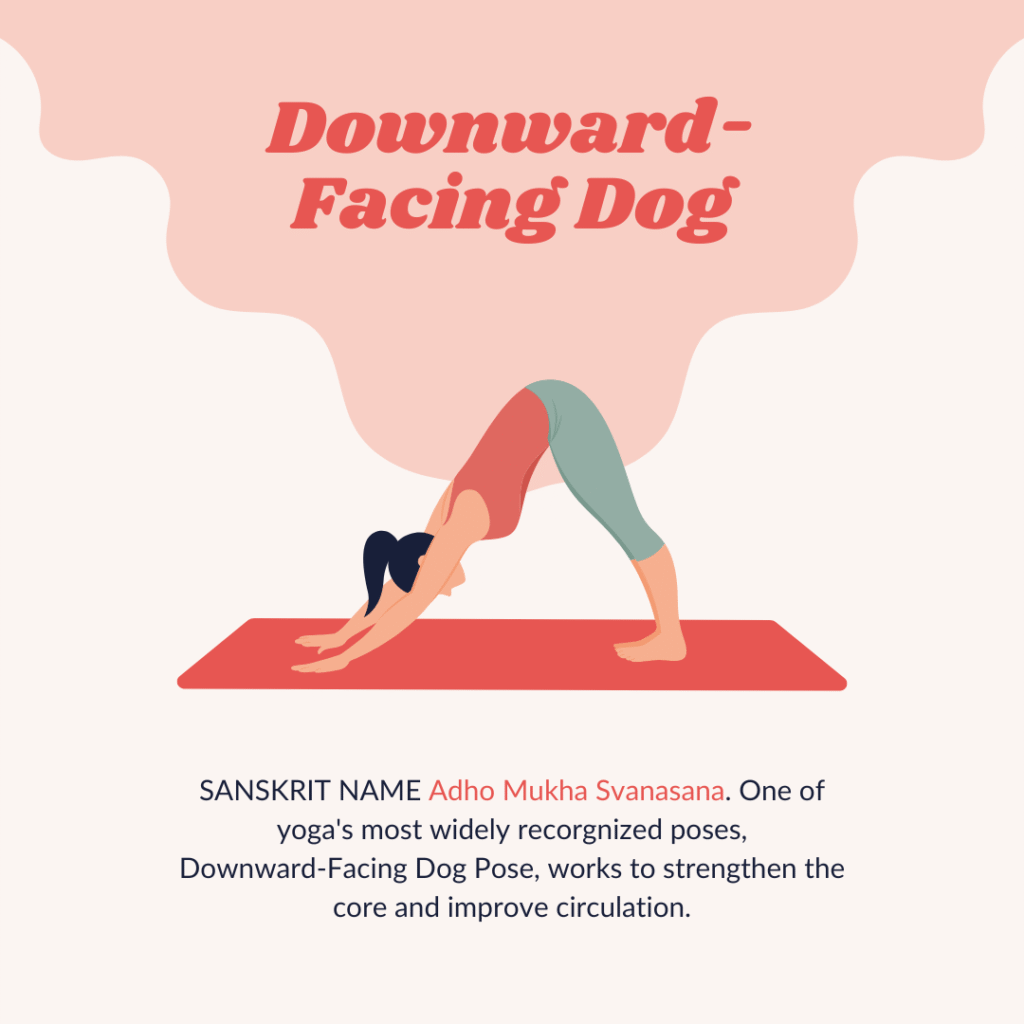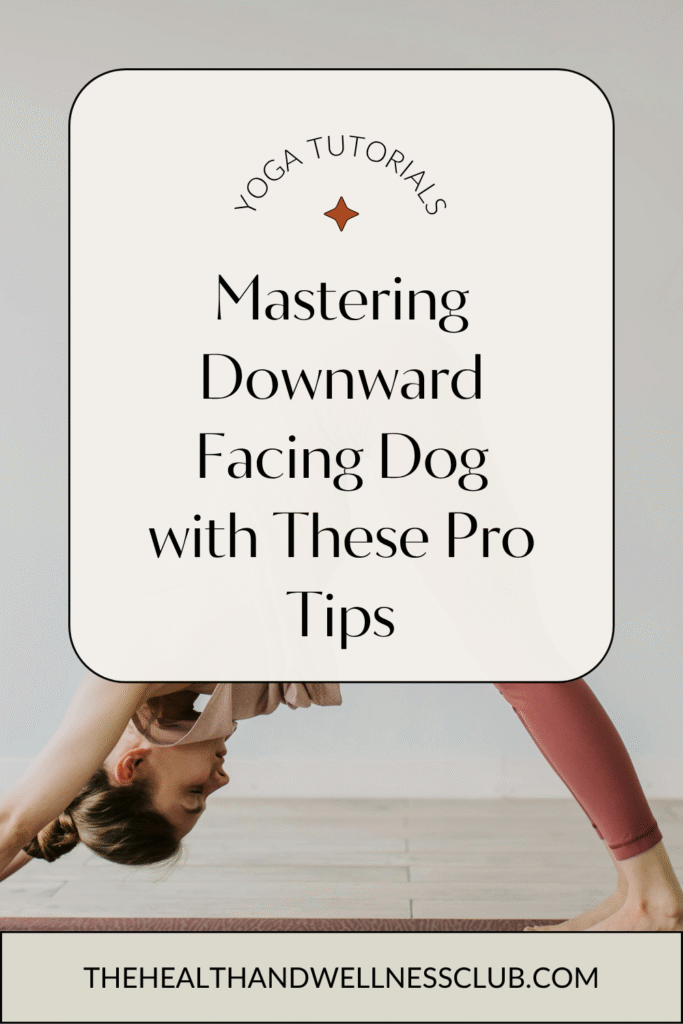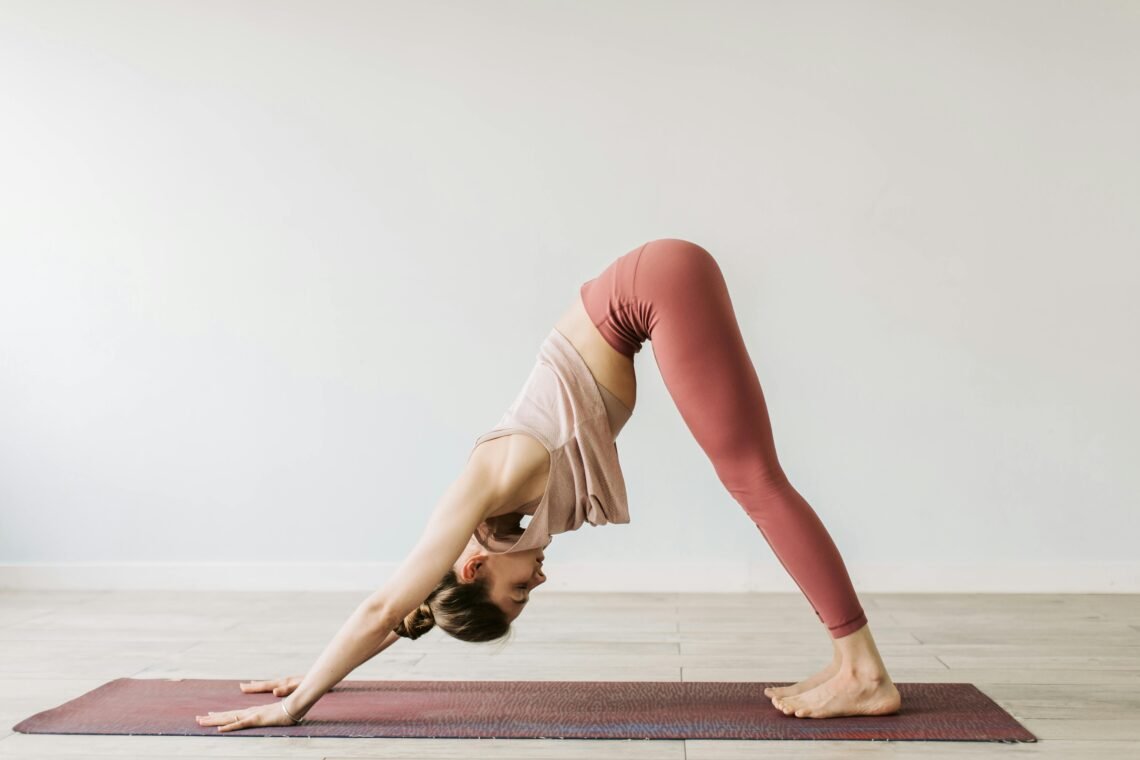Downward facing dog is a foundational yoga pose that seems basic and easy, yet, many are doing this pose wrong. Maybe your heels hover awkwardly above the mat, or your shoulders feel tight no matter how many times you flow through it. Trust me, I’ve been there. This pose looks simple, but it’s surprisingly complex—and when you get it right, it feels amazing.
So let’s talk about how to truly master downward facing dog. I’ll share tips that helped me improve my alignment and flexibility, and we’ll explore why this pose deserves way more credit than it gets.
Why Downward Facing Dog Matters More Than You Think
You’ve probably heard it called a “resting pose,” but—downward facing dog doesn’t feel restful when your hamstrings are screaming and your wrists are begging for mercy. So why do yoga teachers keep coming back to it?
Because it’s a foundational pose that works everything—your arms, shoulders, spine, hamstrings, calves, and even your core. It’s also an inversion, which means your head is below your heart, helping to calm your nervous system and improve circulation.
Benefits of Downward Facing Dog
Downward facing dog stretches the entire posterior chain—from your calves to your spine—and helps release tension throughout the body.
Regular practice of downward dog led to a boost in overall strength, less fatigue, insomnia relief and relief from chronic conditions. Pairing yoga with an anti-inflammation diet would see faster and greater results on your overall health and for inflammation relief.
Getting Into the Pose: The Basics
Let’s break it down. Here’s how I cue myself every time I move into downward facing dog:
- Start in tabletop position – tuck your toes under your feet, hands under shoulders, knees under hips.
- Spread your fingers wide – press into the mat like you’re gripping it, with index finger pointing forward and base knuckles down.
- Tuck your toes and lift your hips toward the ceiling and chest towards the back of the mat.
- Create an inverted V-shape – think long spine, not just high hips. Draw navel in and spread shoulder blades wide.
- Hands shoulder-width apart and feet hip-width apart.
- Relax your head between your arms and gaze toward your knees or navel.
Sounds simple, right? But the magic is in the details.
Alignment Tips That Changed Everything

Hands and Wrists
If your wrists hurt, you’re not alone. I used to dread a long hold of downward dog because of wrist discomfort. Then I learned about hasta bandha—a subtle hand engagement that protects your wrists.
- Press through the base of your fingers, especially the index and thumb.
- Index finger forward and lift slightly through the center of your palm to distribute weight evenly.
This tiny adjustment made a huge difference for me.
Shoulders and Spine
If you feel like your shoulders are doing all the work? That’s a sign your spine isn’t lengthening properly.
- Externally rotate your upper arms—imagine your triceps spinning toward the mat. Hug your forearms in.
- Draw your shoulder blades down your back and spread them wide to create space around your neck.
- Think about elongating your spine, not just pushing your chest toward your thighs.
Hips and Legs
To master downward facing dog, it does require a certain flexibility in your body. If your hamstrings are tight, your knees will bend—and that’s totally fine, as long as you are maintaining a long spine. You can ground your heels down until you have achieved the required flexibility.
- Bend your knees generously to prioritize a long spine.
- Press your thighs back and up to lift your hips higher.
- Reach your heels toward the mat, but don’t force them down.
I used to obsess over getting my heels flat. Now I focus on alignment, and my heels eventually found their way down—without strain.
Flexibility Boosters for Downward Dog
Want to feel more open in downward dog? These stretches helped me loosen up and deepen the pose.
Hamstring Helpers
- Standing forward fold – great for warming up the backs of your legs.
- Reclined hamstring stretch – use a strap to gently lengthen without overdoing it.
Shoulder Openers
- Puppy pose – melts tension in the shoulders and upper back.
- Thread the needle – targets the rotator cuff and improves mobility.
Calf and Achilles Release
- Downward dog with bent knees – alternate bending one knee at a time.
- Wall calf stretch – simple but super effective.
Consistency is key. I added these stretches to my routine and saw noticeable changes in just a few weeks.

Common Mistakes to Avoid
Downward facing dog can go wrong in sneaky ways. Here are a few things I had to unlearn:
Dumping into the shoulders
If your shoulders feel jammed, you’re probably collapsing into them. Engage your arms and lift through your hips to take pressure off.
Rounding the spine
A rounded back means your hamstrings are pulling too hard. Bend your knees and focus on length instead.
Overextending the neck
Your head should hang naturally. Don’t crank your neck to look forward—it strains the cervical spine.
Making Downward Dog Work for You
Not every body is built the same, and that’s okay. Here’s how to customize downward dog to fit your needs.
Use Props
- Yoga blocks under your hands can reduce wrist strain.
- A rolled towel under your heels can ease tight calves.
Modify the Pose
- Shorten your stance if your shoulders feel overextended.
- Widen your feet if your hips need more space.
I used to think modifications were “cheating.” Now I see them as smart choices that help me grow.
Mental and Emotional Benefits
Downward facing dog isn’t just physical—it’s deeply grounding. When you hold the pose and breathe, you will feel more centered and calm.
Stress Relief
Downward dog helps regulate the nervous system by increasing blood flow to the brain. That’s why it’s often used in restorative sequences.
Mind-Body Connection
This pose invites you to tune in. Are you gripping your jaw? Holding your breath? Downward dog teaches awareness—and that’s powerful.
Conclusion: Your Downward Dog Journey Starts Here
So, what’s the takeaway? Downward facing dog is more than a transition—it’s a full-body experience that builds strength, flexibility, and mindfulness. With the right alignment and a little patience, it becomes a pose you’ll actually look forward to.
I still remember the first time it felt good—like everything clicked. My spine lengthened, my heels dropped a little closer, and I felt strong and spacious. That moment reminded me why I keep showing up on the mat.
Ready to master your downward dog? Start with these tips, listen to your body, and enjoy the journey. You’ve got this.





